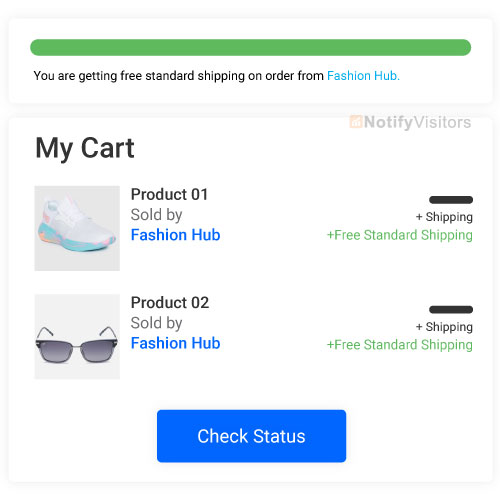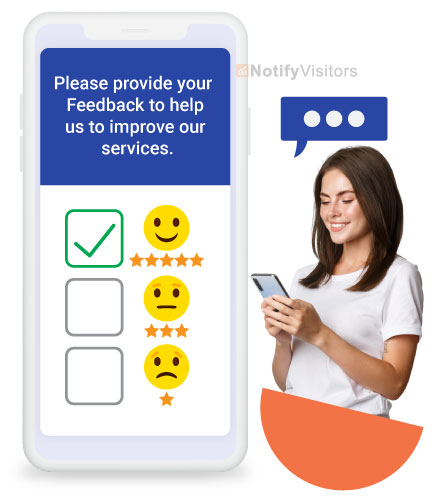Today’s hot topic is “Cart Abandonment.” Let’s start by understanding what it means. Imagine a person visits your online store, adds something to the cart, and then disappears before completing the purchase. Disheartening, right? Well, it’s good you save your emotions because the reality is worse than this.
If we go by the studies, out of all the online carts, around 70% get abandoned. It means for every ten shoppers who add an item to their shopping carts, seven of them actually exit halfway through the checkout journey.
Every year, eCommerce brands from all across the globe suffer a loss of 18 billion dollars in sales due to the abandoning of carts. Now the question arises, “Is there anything we can do about this issue of cart abandonment?” The answer is both Yes and No.
Sometimes, some people add stuff to their online shopping carts and then move on to other activities, not because they intend to make a purchase later but for the sake of surviving boredom. Here, nothing much can be done to persuade this segment of shoppers to complete the deals. Hence these losses are unpreventable.
On the other hand, some shoppers with actual purchase intentions fail to complete the checkout process because of some issues in their buying journeys. The losses from such cart abandonments can be avoided, and we will tell you how.
This article will discuss the most common reasons causing cart abandonment and the best practices to reduce it.
Contents
Common Reasons behind Shoppers Abandoning their Carts
1. Need For An User Account

Some customers get deterred when an online store mandates them to create an account first. This especially happens when they are in a hurry or intend to make a one-time order.
Unwillingness to share personal details like email and credit card info can also be a reason some Ecommerce shoppers find creating an account not worthwhile.
2. A Long & Confusing Checkout Process
Customers seek a smooth and short checkout journey as “the fewer steps, the better” greatly describes their mood. If they’re required to go through a long and complicated round of questions, it can make their exit in the middle.
3. No Incentive
Customers, especially the new ones, expect some kind of incentives, like discounts or promo codes. And when they don’t get any such offer from an online store, they move on to others to try their luck.
4. Delivery Charges
A customer likes a product online and is ready to buy it. But then he finds out that delivery charges are too high, making him drop the deal. This is a very general scenario, and the reason around half of the serious shoppers abandon their shopping carts.
5. Limited Payment Options
Customers like to get different payment options and the answer to “Why?” is pretty simple. Some customers like to pay in cash, and some in a digital way. At the same time, some look for the options like post-purchase payment or EMI, which makes it easier for them to manage larger purchases.
And, when they don’t get their desirable payment options, the chances of them surrendering their shopping carts get pretty high.
6. Unsatisfactory Return & Exchange Policy
When an eCommerce brand doesn’t have a liberal Return & Exchange Policy, customers hesitate to deal with it. And their concern is genuine. If the delivered products have some issues, customers find assurance that they can return or exchange them free of cost.
7. Doubts Regarding Online Payment Security
Ecommerce sites with poor design, no SSL certificate, and outmoded layouts can force any customer to think, “Are the payments he is making safe?” The research from Baymard institute shows around one-fifth of customers are unwilling to share their credit card details with online sites they’re not confident about.
8. Performance Issues With Ecommerce Site

When customers find an E-commerce site slow or troublesome, they lose interest in using it. If we believe the recent studies, three-fourths of customers consider how good a website is to determine the credibility of an eCommerce brand. Hence, we see major Ecommerce entities putting so much effort into upgrading their sites frequently.
Best Practices to Reduce Cart Abandonment
1. Allow Guest Checkout For Your Online Store
Rather than forcing new shoppers to set up an account, you can offer them the option of Guest Checkout. This way they will be able to make their orders very quickly, that too without storing much information.
2. Create a Better Checkout Experience
As an Ecommerce brand, your goal should be to make customers’ buying experience as smooth as possible. You can start by ensuring that the checkout process works well on mobile and desktop. Adding thumbnails of items on the checkout page is also good because it eliminates customers’ worries about selecting the wrong items. You can also include progress bars to tell customers how close they are to completing their checkout process.
3. Free of Cost Shipping

The majority of customers expect delivery free of cost on ordering online. Therefore, offering free shipping wherever possible can help you persuade them to stay in their checkout process and close the deal. There is no doubt this can affect your profits, but having a customer on board is better than not having one.
4. Give Multiple Payment Choices
Customers like ordering online using the way of payment they find more convenient, and when it’s unavailable in an online store, they usually exit midway. Therefore giving a number of payment choices can help you rule out a major factor behind cart abandonments.
5. Return and Refund without Any Extra Charge
Customers need full assurance that if they find any issue with their ordered products, you will back them up as an eCommerce brand. This is why having a solid return and refund policy matters, especially if you’re new in E-commerce and working to gain customer trust. High returns can undoubtedly drain your profit margins; therefore, keeping them as low as possible is crucial. You can share all the important product details, 360-degree images, and extras like product videos to make sure that customers know what they’re getting.
6. Provide Timely and On Point Live Chat Support

When customers select a product, you can send them a pop-up notification asking if they have any questions regarding it or need any help in the buying process. This way, you will probably be able to appease any of the concerns that might lead them to abandon their shopping carts.
7. Take Customer Feedback

Asking customers about their checkout experience can be pretty useful. Whether they face any issues while ordering? Or would they like to deal with you again? If yes, then why. All this data will help you make the online buyers’ journey better. This will also play a crucial role in effectively retargeting the cart abandoners and persuading them to come back.
8. Personalized Email Remainders and Callbacks
If some customers aren’t ready to buy or need to research more before hitting the checkout button, then there are things you can do about it. One is to create an Email campaign to remind them what’s in their shopping carts. You can also suggest similar products because sometimes customers quit when they don’t find the specific product they’re looking for.
Conclusion
Optimizing the performance of your eCommerce site, streamlining the checkout process, and considering the concerns of customers can save you to a great extent from losses happening from abandoned carts.
There is no denying the fact that the issue of cart abandonment can’t be resolved completely, but it surely can be reduced, and that’s what you’re supposed to do as an eCommerce brand.
You can reduce your cart abandonment rate with the help of NotifyVisitors marketing automation tools that are designed especially for Shopify and eCommerce stores like yours.
FAQs
1. What is cart abandonment?
Cart abandonment is when a shopper initiates a checkout process for an online order but leaves before completing it.
2. Why does cart abandonment occur?
Many reasons can lead to shoppers abandoning their carts, such as mandatory account creation, complicated checkout process, high delivery fees, limited payment options, security concerns, etc.
3. How to reduce cart abandonment?
To stop shoppers from abandoning their carts, you can offer guest checkout, do free shipping, make the checkout process smooth, give multiple payment options, provide customer care assistance, and many more.

























 Email
Email SMS
SMS Whatsapp
Whatsapp Web Push
Web Push App Push
App Push Popups
Popups Channel A/B Testing
Channel A/B Testing  Control groups Analysis
Control groups Analysis Frequency Capping
Frequency Capping Funnel Analysis
Funnel Analysis Cohort Analysis
Cohort Analysis RFM Analysis
RFM Analysis Signup Forms
Signup Forms Surveys
Surveys NPS
NPS Landing pages personalization
Landing pages personalization  Website A/B Testing
Website A/B Testing  PWA/TWA
PWA/TWA Heatmaps
Heatmaps Session Recording
Session Recording Wix
Wix Shopify
Shopify Magento
Magento Woocommerce
Woocommerce eCommerce D2C
eCommerce D2C  Mutual Funds
Mutual Funds Insurance
Insurance Lending
Lending  Recipes
Recipes  Product Updates
Product Updates App Marketplace
App Marketplace Academy
Academy

